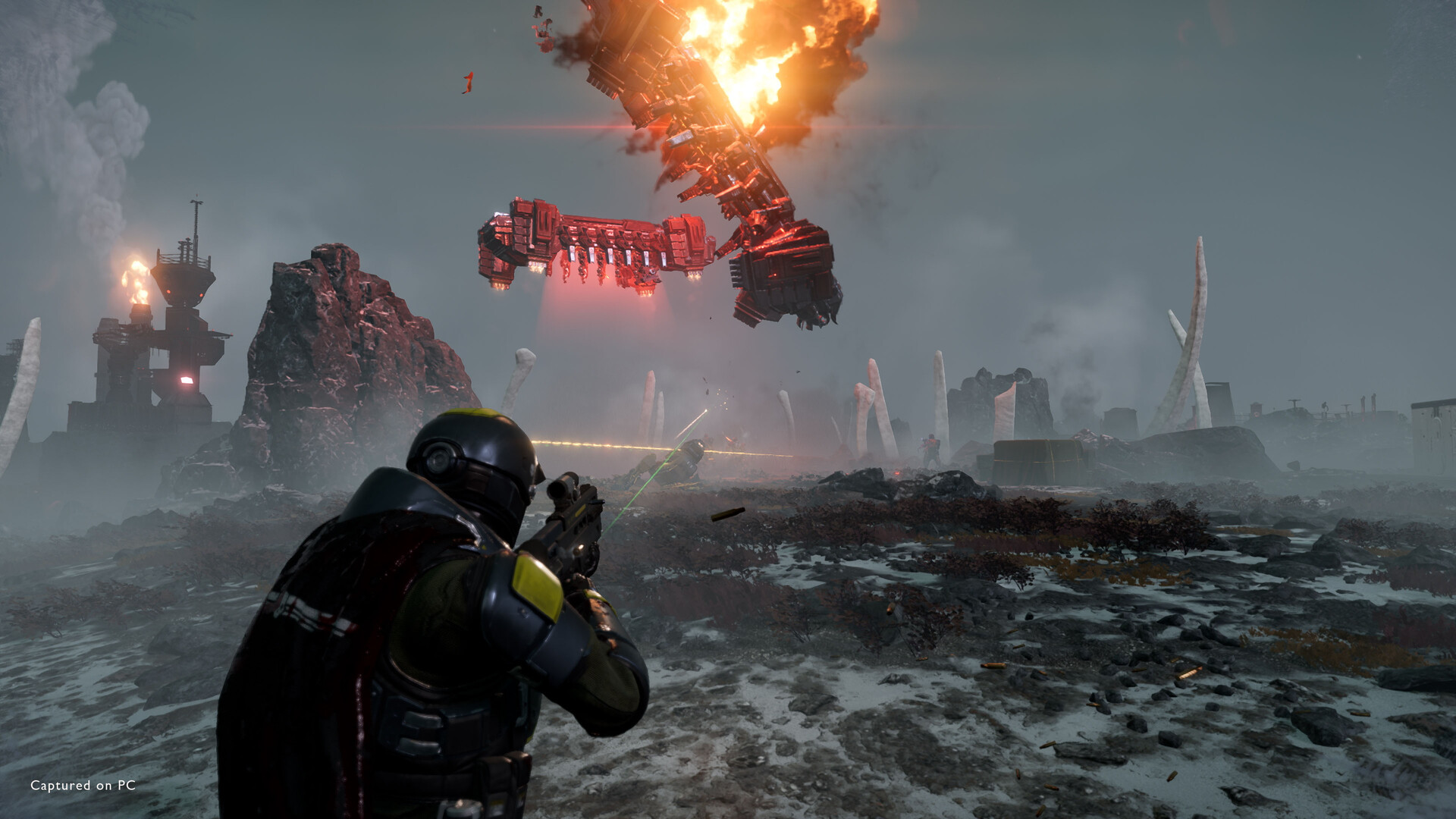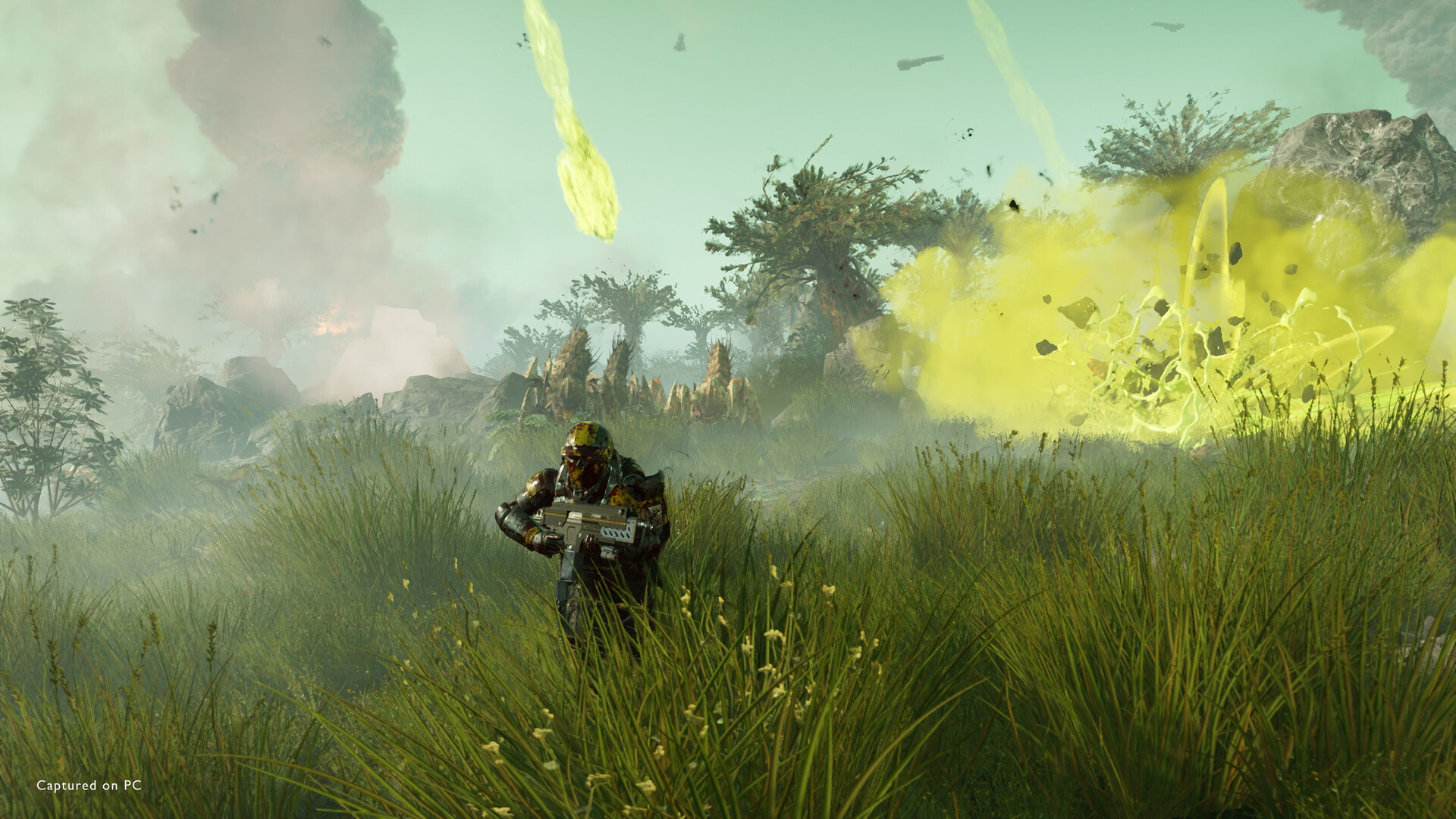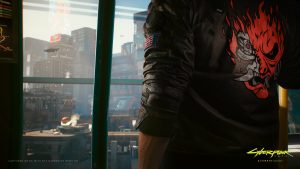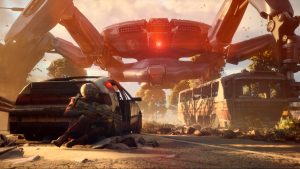
After years of disappointments and high-profile failures, we’ve now come to a point where any time we hear a game is going to be a live service experience, our first instinct is to groan. From Anthem to Suicide Squad: Kill the Justice League, from Marvel’s Avengers to Skull and Bones, from Battlefield 2042 to Evolve and so many others, the list of live service games that have disappointed at launch and continued to do the same with their lackluster post-launch lifecycles is a long one, and it just keeps getting longer.
On the other hand, a major live service game that launches well and then keeps that momentum going after launch? That’s a very short list, and one of its most prominent examples is also its most recent addition. Helldivers 2 launched for PS5 and PC in February, and frankly, nobody expected it to set the world on fire. A $40 AA sequel to a niche, smaller experience, Helldivers 2 seemed destined to come out and be forgotten about within a few weeks, if that.
To say that it has blown through those expectations would be a massive understatement. As of mid-March, it’s estimated to have sold 8 million units, and is still attracting players in droves on both platforms. And a big reason for that has been that Helldivers 2 has managed to use its live service nature in a way that we’ve rarely ever seen from any other game before. The potential for a game that tells a continuously evolving story, one that reacts to the collective actions of a thriving community, has always been an enticing one, but it’s also one that has only ever existed on paper. Other than the behemoth that is Fortnite, no game has managed to use its live service operations to tell an engaging ongoing story. Not only has Helldivers 2 done just that, so far, it’s done it so well that it should – and likely will – become the blueprint that future live services should look to.
Helldivers 2 is not, of course, a story-driven game. As a co-op shooter, the bulk of it is focused on the gameplay and the action, with the storytelling happening outside of the game as much as it’s happening inside of it. Since launch, developer Arrowhead Game Studios has been frequently releasing new Major Orders, collective missions for the entire community to work towards, and the outcomes of these missions often end up shaping the game in fascinating ways. For instance, shortly after Arrowhead confirmed that it would be adding mechs to Helldivers 2, it pushed a new Major Order, tasking the community to liberate the planet of Tien Kwan from Automaton control, which, in turn, would allow Super Earth’s exosuit manufacturing facilities on the planet to begin production. You want those mechs so bad? Fine. Work together with the community and make sure that Super Earth can actually produce them.
A more recent Major Order has also changed things within the game in significant and surprising ways. In late March, Super Earth issued a new Major Order, ordering the complete annihilation of all Automatons, one of the two enemy factions that have been available in Helldivers 2 since launch. Over the last couple of weeks, the community has managed to rally together and fulfil that objective. Through collective player action, Helldivers 2 has now just completely removed an entire enemy faction, just as failing the Major Order would have meant the continued existence of Automatons. Even in these first couple of months, time and again, Helldivers 2 has shown how a live service game’s developer and its player base can collectively shape its ongoing story.
Where exactly will the game go from here? We can probably assume that Super Earth won’t be basking in its victory for too long. In March, Helldivers 2 players started spotting mysterious blue lasers in the sky on several in-game planets. There was (and has been) no word from Arrowhead on what those lasers were, but many have speculated that those lasers were the precursor to the addition of a new faction- which previous datamining indicated would be the Illuminate, a faction from the original Helldivers. Does that mean that the Illuminate are going to pose an even bigger threat in the wake of Super Earth’s victory against the Automatons? That air of mystery has only made the community that much more actively engaged with the ongoing storytelling. (NOTE: Since the writing of this feature, Arrowhead Game Studios has confirmed that the Automaton faction has returned to Helldivers 2.)
It helps, of course, that players have been as willing to buy into Helldivers 2 and its fiction as they have been. Forums and social media are flooded with players spreading the glorious propaganda of Super Earth, talking about the wonders of Managed Democracy, and pledging their lives to the cause of spreading it across all corners of the galaxy, whether the galaxy wants it to happen or not. Oh, and if we manage to claim unfathomably vast quantities of E-710 (aka bug oil) from the planets that we “liberate” while we’re at it? Well, that’s just a nice bonus in our mission to spread Managed Democracy. Where most games would be laughed out of the room for trying to make their in-universe jargon a “thing”, with Helldivers 2, the player base is gladly in on it. That is, of course, because that lore is as good and hilarious in its commentary as it is- and also because it’s just a damn good game to play.
And Arrowhead has made sure that it stays that way. This is exactly where so many live service games fail- how they just can’t figure out a way to keep players engaged on a consistent basis. Helldivers 2 hasn’t had that problem thus far. It’s received a constant stream of new features and content, and all of it has arrived in a manner that isn’t exactly conventional for ongoing titles. Rather than inundating players with roadmaps and releasing seasonal content, Arrowhead has instead been doling out shiny, new toys in bits and pieces at a regular clip. Often, it does so without even telling players.
Before the aforementioned mechs were officially added to Helldivers 2, Arrowhead started sneakily sprinkling them in for some players at random without ever officially mentioning them. Last month, the game added a new enemy type in the form of flying bugs, with Arrowhead CEO Johan Pilested denying their existence on Twitter after players started spotting them on planets, calling them “bug sympathizers” and their claims “fake news” (before casually walking back on his statements afterwards). Where most games would announce the upcoming addition of new things, Helldivers 2 just drops them in, lets players discover them, then as those discoveries go viral, pours fuel on those flames by cleverly using its in-game lore and mythos for bits and pieces of ongoing storytelling outside the game itself.
It’s no surprise that Helldivers 2 has managed to retain such a sizeable player base. As recently as April 7, two months on from its launch, it hit a concurrent user count peak of over 345,000 on Steam, while it’s also consistently topping the platform’s charts for best-selling paid titles.
Beyond that, Arrowhead has been adding in everything from planetary hazards in the form of fire tornados, blizzards, sandstorms, and more, to new weapons, emotes, and cosmetics through new Warbonds (Helldivers 2’s version of battle passes). All of this has been filtered in with regular, bite-sized updates, and the cadence, quality, and uniqueness of the post-launch support is made that much more impressive by the fact that the massive success that the game has enjoyed was completely unexpected for both Arrowhead and Sony. The studio obviously had plans for post-launch support before the game came out, but after its astounding success, those plans have had to be significantly and aggressively accelerated. Arrowhead deserves a great deal of credit for how it is successfully managing that growth while also successfully managing live service operations in a manner that we’ve never seen from an ongoing game in the past.
Above all else, Helldivers 2 actually feels like a live service. The game is constantly evolving, changing, and most importantly, reacting to players, in both big ways and small. In fact, I’d go as far as to say that Helldivers 2 is perhaps one of the only games to date that has truly understood what the point of live service should be. Over the years, the games-as-a-service model has become a depressing vehicle for relentless disappointments and aggressive monetization, but Helldivers 2 is using it in a way that’s not just good for maintaining a persistent revenue stream, but good for the actual game itself. Arrowhead Game Studios has shown up the entire industry with its little co-op shooter, and will hopefully become the model that future live service games look to follow. You want success with an ongoing game? This is how you do it.
Note: The views expressed in this article are those of the author and do not necessarily represent the views of, and should not be attributed to, GamingBolt as an organization.

















